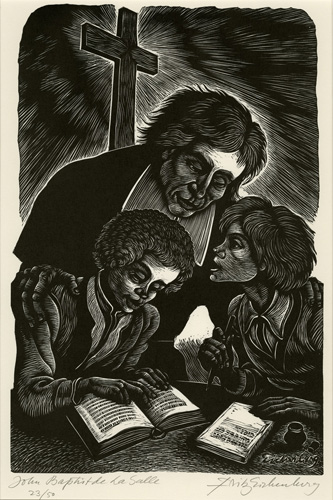Title
Preview

Description
Unknown Artist (19th Century), American or British
Portrait of a Lady, c. 1850
Watercolor on paper
Purchased with funds provided by Kerry L. Bryan in memory of Mrs. Elizabeth E. Hutter (1821-1895)
Collection of La Salle University Art Museum, 15-D-460
FYS 130: Fashion, Art, & Identity is rooted in Institutional Learning Outcome (ILO) 1, which asks students to describe the diverse contemporary and historical perspectives relevant to a specific context, issue, or problem. To do that, students need to learn to use material objects like this fashion illustration as a primary source for analysis. Although fashion is often thought of as a frivolous afterthought, its layers of fabric and fastenings can help illuminate the historical lives of women and men, the societies they inhabited, and the economies and people that produced those garments. To unlock these secrets, we need to learn to engage in a process called “slow looking,” patiently unraveling the stories a garment contains through close visual analysis. From this watercolor—which may have been intended for reproduction as a fashion plate in a magazine—we can determine from the bell-shaped sleeves, the full skirt supported by a voluminous bustle in the back, and the black jewelry this woman wears that her dress probably dates from the 1850s or 1860s. Her trim waist would have been defined by a corset made from whale bones or, after 1856, steel, worn underneath the dress. Students in the class will be encouraged to reflect on how such a restrictive garment, supported by layers and layers of crinoline, would have felt on the body. What would it have been like to move, breathe, or work in such a dress?
Twenty-first century fashion, with its “athleisure” wear and yoga pants, places bodily comfort at a premium. In stark contrast, wearing this dress would not have allowed a woman much freedom of movement, and slouching would not have been an option. ILO 1, however, asks us to apply a variety of different perspectives to a single issue or, in this case, garment. Is the corset a material symbol of women’s limited legal and professional status? Or, can it serve as evidence of female agency, status, and respectability? Students in the class will reflect on these issues, learning to use visual and historical evidence to effectively express their own opinions.
Catherine Holochwost, Ph.D.
Assistant Professor of Art History, Department of Art
Broader Identity
- 1. Understanding Diverse Perspectives
Effective Expression
- 9. Creative and Artistic Expression
See this object in the Art Museum Online Collections Database:
http://artcollection.lasalle.edu/Obj4600
Rights
Collection of La Salle University Art Museum; http://artcollection.lasalle.edu/kiosk/rights.htm


